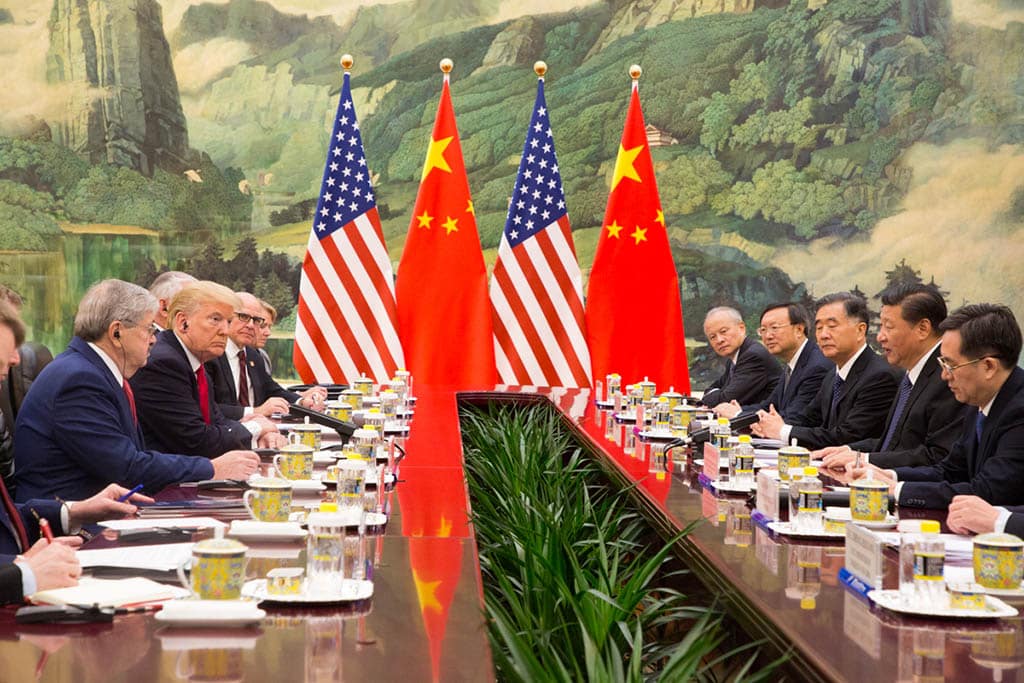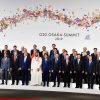
The relatively abrupt clash between China and the US could leave its mark on the rest of the world in years to come, reordering or rather disordering it even more, and dividing it into mutually incompatible ecosystems, owing to distinct technological –but also economic and political– standards. It is not a mere trade war but rather a fight for supremacy, for the time being technological, because it is technology, together with the size of the country, the economy and military prowess that these days determine power and domination. Even if Donald Trump and Xi Jinping strike a deal in the weeks ahead, the clash will have serious consequences for their countries and the rest of the world.
Looking beyond the tariffs, the techno-nationalist measures announced by the Trump Administration will have an impact on China’s industrial policy and geopolitical focus. And it is not only Trump; it is a view increasingly shared by the Democrats and in some US technology circles. It is taking root in the US. Denying Huawei access to updates in the Google operating system (Android), and to apps, and above all, as far as Huawei and other Chinese firms are concerned, the design and manufacture of the most advanced microchips (controlled by three companies in the world) involves stifling not only Huawei, which has made the most headway in 5G technology –fundamental to much future progress– but also the country. And this buys time for the US to catch up with China in the field. It is a case of thwarting possible Chinese tech primacy. Huawei is no more than one part, although it is one of the giant Chinese multinationals.
Whether or not a deal is finally made, China will draw its own lessons about the importance of not being dependent on the US in these and other matters, to become more self-sufficient and, ultimately, more powerful. Xi Jinping has referred to ‘a new Long March’. Considerable numbers of his countrymen believe that time is on their side, over the mid- to long-term, although they have much to lose over the short term. China’s capacity to innovate has grown a great deal in a short time, although it still has some way to go. While it is often no easy task to reverse engineer advanced microchips, China is going to try to acquire these and other technologies as soon as possible.
This dynamic may lead to the creation of two digital ecosystems in the world that to a large extent are incompatible with each other: one centred on the US and another revolving around China, severing some essential supply chains that underpin the latest phase of globalisation, now being challenged. It will not be a total separation, since the ecosystems of both countries, and the world, are intimately interwoven, but it will be evident in important respects. Some leading US universities are already proposing to restrict their intake of Chinese researchers and students (of whom there are 360,000). China, meanwhile, is starting to compete with the West in certain areas, for example with its UnionPay payments and credit card system, where it rivals Visa and other Western brands. Beijing has issued warnings that it could, in revenge for the Trump Administration’s measures, limit its exports of rare earths, essential for the current technological revolution. There are non-Chinese alternatives, but they could involve delays for all concerned. Then there is the US$1.2 trillion of US debt in Chinese hands, or the concern of some large US corporations regarding their presence in China, from IBM to Apple.
All this is part of a geo-technological rivalry that will put the rest of the world to the test. Europe, the ‘subject and object’ of this tension as Luis Simón puts it, divided with regard to China, is caught up in the middle of the conflict, although NATO, the transatlantic vision and some shared values still count, Trump notwithstanding. Many European companies are starting to suffer from the tension in their dealings with their Chinese counterparts. That said, the European Commission has already described China as an ‘economic competitor’ and a ‘systemic rival’. Emmanuel Macron’s idea of a European model for the Fourth Industrial Revolution, between the ‘enterprise-states’ (US) and the ‘state enterprise’ (China), has not taken off. China’s Belt and Road Initiative is an essential geopolitical project, mainly for Eurasia, and Washington will also try to obstruct and halt it.
For its part, Russia is flirting with Beijing, but it is not in Russia’s interest to fall fully into its arms. Africa, the continent that is going through the greatest demographic explosion, is very open to China. Huawei is making considerable inroads there, witness a deal it has struck with the African Union. Latin America has also seen tensions stemming from this situation. And there are divisions in Asia. India’s position is soon going to be decisive. Although it has not (yet) become a military confrontation, various countries, led by Japan and Australia, are trying to assemble a coalition against China, in which they would like to see the Europeans (and NATO?) involved. There could of course be a flare-up at any time in the South China Sea, although US superiority in the military realm is still overwhelming. But for how much longer?
It is important not to overlook the role of values and even cultures, given that in the Cold War the US and its allies and the Soviet Union shared a broad cultural base in common, even though their systems were separate. The current dynamic is much more complex –not necessarily more dangerous– than at that time. The world may once again split into various dimensions, in other ways. Can it be avoided? The G20 in Osaka –where Trump and Xi are to meet– will try. But we have been swept into a process that is difficult to reverse, and, if substantiated, may engulf us all.


